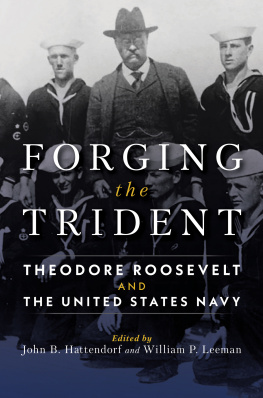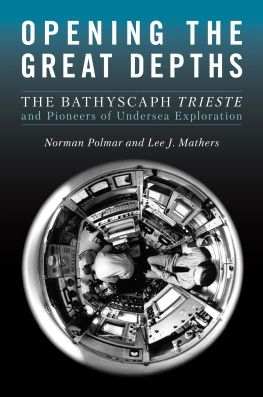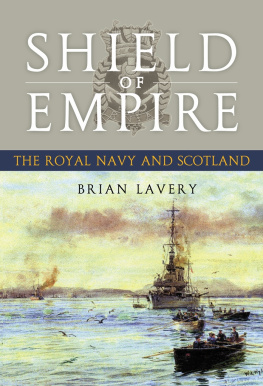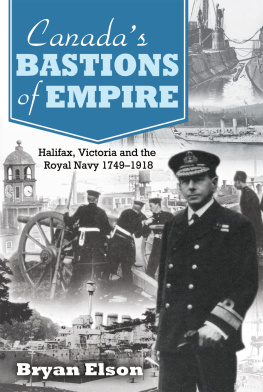Contents
Guide
Pagebreaks of the print version
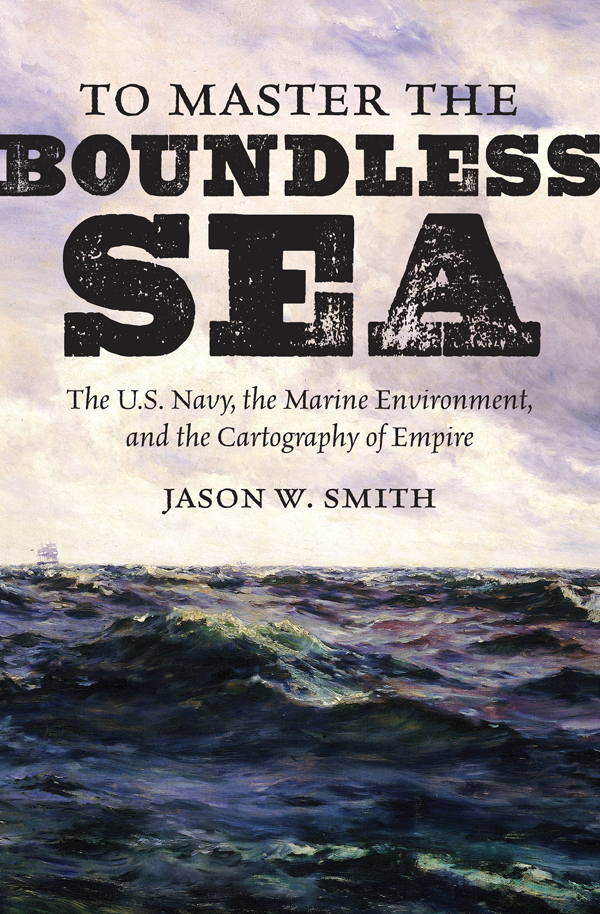
To Master the Boundless Sea
Flows, Migrations, and Exchanges
Mart A. Stewart and Harriet Ritvo, editors
The Flows, Migrations, and Exchanges series publishes new works of environmental history that explore the cross-border movements of organisms and materials that have shaped the modern world, as well as the varied human attempts to understand, regulate, and manage these movements.
To Master the Boundless Sea
The U.S. Navy, the Marine Environment,and theCartography of Empire
JASON W. SMITH
University of North Carolina PressChapel Hill
This book was published with the assistance of the Anniversary Fund of the University of North Carolina Press.
2018 The University of North Carolina Press
All rights reserved
Set in Charis and Lato by Westchester Publishing Services
Manufactured in the United States of America
The University of North Carolina Press has been a member of the Green Press Initiative since 2003.
Library of Congress Cataloging-in-Publication Data
Names: Smith, Jason W. (Jason Wirth), 1982 author.
Title: To master the boundless sea : the U.S. Navy, the marine environment, and the cartography of empire / Jason W. Smith.
Description: Chapel Hill : University of North Carolina Press, [2018] | Includes bibliographical references and index.
Identifiers: LCCN 2017045197 | ISBN 9781469640440 (cloth : alk. paper) | ISBN 9781469640457 (ebook)
Subjects: LCSH : United States. NavyHistory. | United StatesHistory, Naval. | Nautical chartsUnited StatesHistory. | Cartography. | Imperialism and science.
Classification: LCC E 182 . S 574 2018 | DDC 359.00973dc23
LC record available at https://lccn.loc.gov/2017045197
Jacket illustration: Hove-to for a Pilot (1893) by Henry Moore (Image BHC 4175, National Maritime Museum Picture Library, National Maritime Museum, Greenwich, London).
Portions of this book were previously published in a different form and are used here with permission. Material from chapter 2 appeared in The Bound[less] Sea: Wilderness and the United States Exploring Expedition in the Fiji Islands, Environmental History 18 (October 2013): 71037. Material from chapter 3 appeared in Matthew Fontaine Maury: Pathfinder, International Journal of Maritime History 28 (May 2016): 41120, published by SAGE Publications Ltd., all rights reserved, Jason W. Smith. Material from chapter 5 appeared in Twixt the Devil and the Deep Blue Sea: Hydrography, Sea Power, and the Marine Environment, 18981901, Journal of Military History 78 (April 2014): 575604.
To my parents and grandparents, my students, and, above all, to Megan and Nel, with love and gratitude
Queequeg was a native of Kokovoko, an island far away to the West and South. It is not down in any map, true places never are.
Herman Melville, Moby-Dick
Contents
Illustrations
Introduction
The Boundless Sea
Nothing like a lead-line well swung to sharpen an agile mind.
Robert Seager II, Alfred Thayer Mahan: The Man and His Letters , 1977
In January 2013, the minesweeper USS Guardian struck a coral reef in the Philippines. Precariously listing, pounded by surf against coral, the ship was a total loss. The incident was an embarrassment for the navy and the United States, another moment in a long, complicated history with the Philippines. Filipinos and others openly wondered what the vessel was doing there in the first place, recalling the United States long imperial shadow in the islands going back to the Spanish-American War of 1898. The navy blamed inaccurate digital charts in attempting to explain why a modern warship, equipped with charts, sonar, and other navigational technologies, could find itself hard agroundan unlikely flash point for questions of empire, navigation, cartography, science, and nature.
As historian Alistair Sponsel has observed, perhaps the most interesting aspect of the Guardian s fate was not the grounding itself, but the collateral damage to the natural world. The vessel struck Tubbataha Reef, eighty miles east of the island of Palawan, a UNESCO World Heritage Site, home to one of the most pristine coral reef environments in the world, and protected under Philippine law. Through the winter and spring of 2013, the $277 million vessel was scrapped, not by pulling it off the coral, which would have done additional damage to the ecosystem, but by tedious, piecemeal disassembly on the reef as salvors torches and saws cut the ship apart, in effect, finishing what the natural environment had begun. Coral reefs, Sponsel argues, have been transformed from dangerous to endangered. For thousands of years, mariners hoped to save their ships from them. Now, it seems, we desire to save reefs from ships.
The Guardian s fate underscores a number of important questions taken up in the following pages. Ships run aground, and when they do, vessels are damaged or lost, and nations and their people are left to wonder about imperial relationships and the fragility and power of nature. Hydrographic charts and other navigational tools, no matter their sophistication, are often flawed representations of a complex, dynamic, natural world whose presencetoday and historicallyis a pervasive element of naval operations. What role does the marine environment play in navigation, strategy, and empire more broadly? Directly or indirectly, the Guardian s grounding raised these issues anew. Of course, such questions are as old as navies themselves. From its origins in the 1790s, the U.S. Navy has struggled to understand, to use, and sometimes to control and change the marine environment to further the nations commercial and strategic interests. This book tells part of that story.
It does so by focusing on American naval scientists, whose work surveying, charting, and thus representing and imagining the marine environment through the nineteenth century played a critical and often overlooked role in the expansion of American empire. The navys hydrographers and the charts they produced provide a lens with which to more deeply examine the historical encounter between navies and the marine environments that so fundamentally shape their activities. It also explains the growth of American power and the expanse of empire in ways that transcend the usual manifestations of military power on land and seabattles won and treaties signedfor the subtler, but no less potent, tools of science and cartography.
What follows is a watery history of American empire. It is set in the liminal spaces where surf meets sand beach, coral reef, or ice-bound shore, from the deep sea to a littoral often labyrinthine in navigational hazards, from the mysteries of the deep ocean to the bays, harbors, and coastlines that together formed the natural spaces of American oceanic empire in the nineteenth century. From the treaties, battles, and other discourses that collectively define the historiography of American empire in the nineteenth century, this work descends to the water itself, examining the nuts and bolts of empire building in a marine environment that was central but often hostile or indifferent to such intentions. Outside the continental United States, in waters where the nation sought to extend first its commercial might, and later, its more muscular visions of sea powerto use a phrase coined by the naval officer and theorist Alfred Thayer Mahan in 1890American naval officers used hydrography, broadly defined as the study of ocean depths, winds, currents, tides, and meteorology, to claim, recast, and control the marine environment. In doing so, they professed a scientific faith in the empiricism and precision of their methods that was just as imperial in its vision and execution as other more obvious forms of American power at sea. At sea, the empirical was inextricably imperial.



